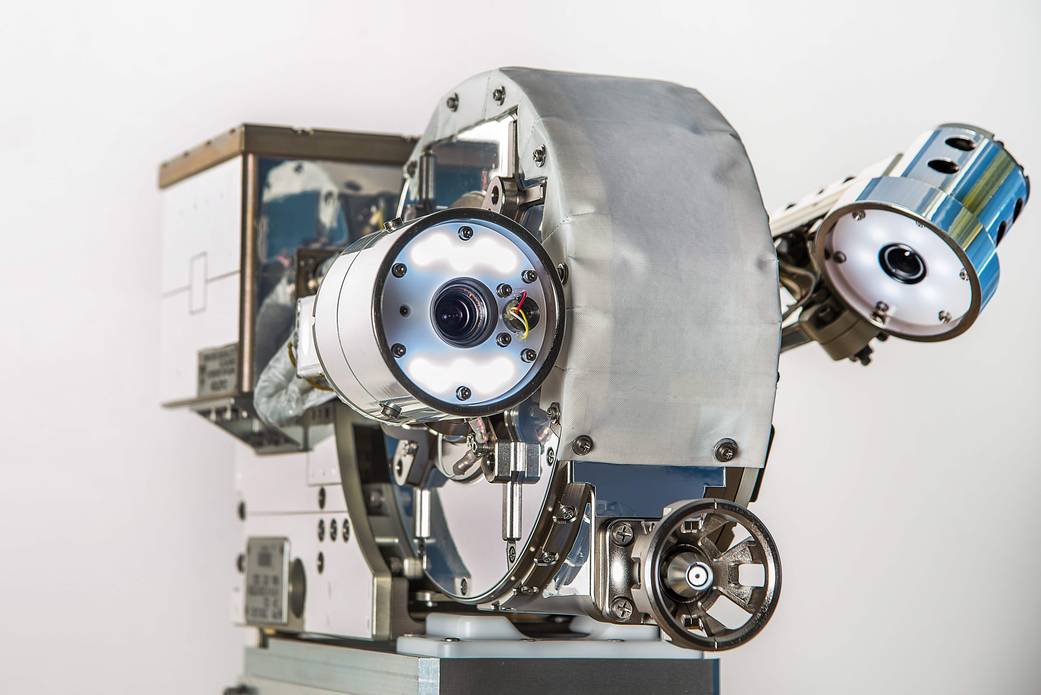It is expensive to launch a satellite. If there is a problem with a satellite, it would be better to be able to repair it in orbit than to send up another satellite to replace it. A spacecraft could be sent to repair a satellite but that is also very expensive and will be until reusable launch vehicles and long mission spacecraft become available. In the meantime the best alternative would be to have a satellite that was capable of rendezvousing with a faulty satellite and repair it.
The Visual Inspection Poseable Invertebrate Robot (VIPIR) is the latest entry in attempts to create a robot that can repair satellites in orbit. This robot will be teleoperated by humans on the ground or in spacecraft.
VIPIR has with a fixed situational camera that is fixed lens with a 6mm focal range. It is used to provide a visual context for the deployment of the articulating borescope which can extend up to thirty four inches and can bend up to ninety degrees. There is also a 8-24 zoom-lens equipped with a pair of half inch diameter motors that control zoom and focus. This system can resolve details in a worksite as small as two tenths of an inch which is thinner than a credit card. Each camera comes with integrated lights so that the work area will be well lit. The purpose of this robot is to allow remote human operators to look at strikes by small meteors, check anomalies and to assist in the repair of satellites.
In May of 2015, the VIPIR was successfully tested at the International Space Station. It was mated to the Dextre, the mobile repair robot on the ISS. I discussed Dextre in my last post on this blog. Dextre maneuvered around on the outside of the ISS which allowed the VIPIR to use its cameras to inspect things from different perspectives. It also poked its borescope camera into a simulator of an inspection port. For the next test of the VIPIR, it will again mate with the Dextre robot. The robots will be used to transfer xenon gas to a simulated satellite. Xenon gas is used in ion engines that are extremely efficient and very useful for allowing satellites to maneuver in space without consuming a lot of energy or fuel. This will be a demonstration of the ability of the VIPIR to refuel satellites in orbit.
The VIPIR is the forerunner of robots satellites that will carry out inspections, repairs and refueling of the many satellites now in orbit. As these robots satellites evolve, it is possible that they will be able to be integrated with artificial intelligence systems that will permit them to function without the need for human operators. Other critical missions such as retrieving and removing junk and debris from orbit or making modification and additions to existing satellites may eventually be carried out by these utility robots via remote control or autonomous operation.
Visual Inspection Poseable Invertebrate Robot:
Image Credit: NASA/Chris Gunn
